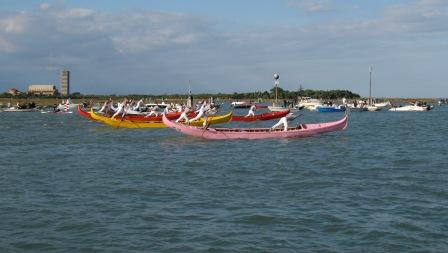Search results
56 results found.
56 results found.
A situation has been brought to light — actually, had light suddenly and dramatically shone on it — that ought to be noticed more clearly than by the faint gleam discernible over here. Allow me to step in with at least a couple of highway flares.
A few paragraphs in the Gazzettino recently revealed that the basilica of Santa Maria Assunta at Torcello is falling apart. Brief and brutal, but there it is. This news may not have interested very many people here because the paper is full of stories, depressingly often, about the ways in which Venice is falling apart.

Pieces of stone drop off facades (November, 2007, a 110-pound/50- kilo chunk fell from the Palazzo Ducale and grazed an elderly German tourist; November, 2008, a 15-inch/40 cm bit of marble from a house in the San Marco area grazed a Swiss tourist as it headed earthward; March, 2010, a 132-pound/60-kilo piece broke off the convent of Cristo Re near the Celestia; October, 2010, a bit of stone decoration fell off the Court building and struck an employee…..). Roofs collapse, bell-towers are braced, and so on. The reason? All together now: No ghe xe schei. The mayor himself has said that he may have to ask for money, not for the sake of the buildings per se, but for the sake of public safety.
But back to Torcello, a lovely, almost uninhabited little island famous for the aforementioned basilica, which is arguably one of the gemmiest of the gems of Venetian history, art, architecture, and above all, mosaics.
Life is hard on Venice in so many ways, from high water to tourist trampling. But let us not overlook what may be the most dangerous hazard of all: Neglect.
Torcello’s parish priest, don Ettore Fornezza, recently drew attention to one example of what neglect can lead to: The floor mosaics are breaking up.
I went to Torcello the other day to see don Ettore and the situation that he was describing.
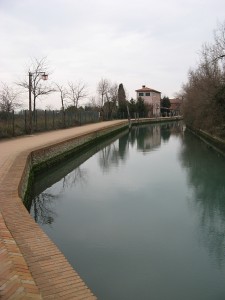
For anybody who loves Torcello, or who believes that there is no place within 50 miles where you can go to escape the tourist tidal waves, I cheerfully recommend you visit the island early on a freezing, windy, gray Sunday morning in January. Yes, it was colder than I don’t know what. (Down side.) But there was literally no one and nothing in sight. (Up side!) I’ve been going to Torcello for years and I have never seen it utterly deserted. The lagoon was empty too. It was so astonishing that it was worth not being able to feel my feet.

People go to Torcello to admire the mosaics on the walls. But the floors are no less valuable, and they get a lot more punishment. You can see the evidence of this deterioration everywhere, in the widening spaces between the bits of stone and even in grotty, dark empty areas as big as salad plates and as much as an inch deep. Unchecked humidity, for one thing, has gradually loosened the tesserae (as the bits of stone are called) and made them vulnerable to other forces. Like people and their footwear.
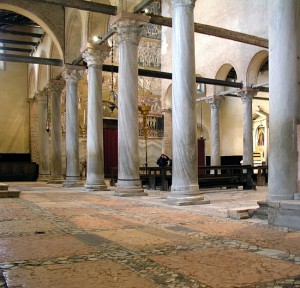
And so it was that during a recent stroll around the church, don Ettore saw a tourist not only dislodge a small piece of 1000-year-old mosaic with the heel of her shoe (regrettable but not intentional), she then picked up the loose bit and made to put it in her pocket. Or purse. Anyway, to take it away.
When he asked her what she was doing, she replied, “I wanted it as a souvenir.”
Somewhat thunderstruck, he suggested she consider leaving it behind, so it could be kept, if not actually returned to its native habitat.
She gave it back.
When don Ettore reached this point in the story, it occurred to me that it was too bad he hadn’t replied, “Well then, I’d like to take your shoe as a souvenir.” Just a thought.
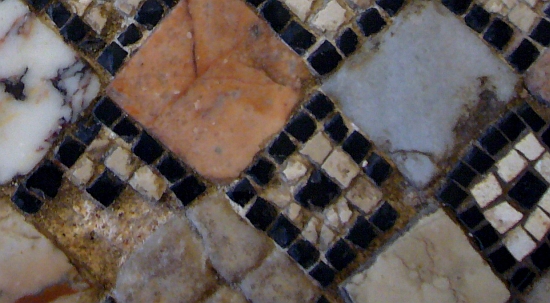
But this is no time for gay repartee. The incident of the tessera was merely one random event in a long and all-too-evident decline. Because for some time now, the heels of the shoes of thousands of tourists a day have been weakening what is, in fact, a very fragile creation. All it takes is for one piece to go, and the discussion shifts from what is happening to merely how long it’s going to continue.
For don Ettore, this moment was, as he put it, “the spark” to bring to light the larger, deeper, wider problems of the basilica.
“We can’t go on like this,” he said. “People come from all over the world, and they see the deterioration and they come to tell me. I can’t do anything, because I”m responsible for the spiritual side. But I have eyes, and I see the things that don’t go well. Torcello could be reborn, with a little attention. With the love people have for this place, this would be the pearl, not only of Venice, but of the world. It’s worth the trouble to insist on this, because Torcello is worth it. We don’t want Torcello to die. If it were up to me, it would have been resolved already.”
There are so many distressing aspects to this situation that you can pick any one at random and ruin your day. Given that the present mosaics (not the first mosaic flooring, by the way, which was laid in the 8th century) date from 1008, it’s obvious that they will now be in need of constant and expensive care. Just like a person, actually, when you think of it.
But here we have an ancient and irreplaceable work of religious, historic, and artistic value; we have uncontrolled masses of people using it every day for most of the year; and we also have lack of personnel, lack of serious interest, and — no need to repeat it, but I must — absence (they say “lack”) of money to do anything useful to deal with it. Here, too, the skeletal hand of chronic poverty is tightening its grip.
Speaking of poverty, however, let me insert some startling observations made to me in Hyderabad, India by Mr. P.K. Mohanty, then Commissioner of the city’s governing body. (I was there for my article on “Megacities,” National Geographic, November 2002.)
“What we need in India isn’t money,” Mohanty said. “Large cities of the Third World are reservoirs of wealth. We need political reforms, bureaucratic reforms. The problem is one of poor management. If cities are properly managed, there cannot be resource problems.” I’d guess that the same could be said of large cities of the First World.
As for the mosaic floor of the basilica, nobody can consider spending the money that would be needed to complete a serious restoration — they say there’s no money even to pay for a protective carpet like the one that often covers the floor of the basilica of San Marco. But anyone who has visited the Roman-mosaic-blessed former churches at Aquileia and Ravenna will recall that their mosaic pavements are kept in near-perfect condition. Aquileia and Ravenna have mysteriously found a way to acquire the schei necessary for their mosaic maintenance. Or maybe, as Mr. Mohanty observed, the problem isn’t really schei.

Back to Torcello. I would like to blame mass tourism, because obviously masses of tourists are not helping the situation. But I hesitate to use a term which is so general that it could describe almost everything except plants (no wait, those travel too) to describe just one certain type of tourist. Of course there are cultivated, intelligent, sensitive tourists who leave a very faint footprint on the delicate, peerless places and cultures they visit.
But there is the clueless tourist who tends to come in chaotic herds, and who passes through leaving behind not much beyond a few sous and a lot of accumulating wear and tear on the places and people he or she has encountered. And some trash, usually.
Taking away pieces of Italian history is nothing new. The Italians themselves, over the centuries, have removed tons of pieces of their monuments for use in other projects. And there are, unfortunately, still too many tomb-robbers who steal and sell priceless artifacts from lost civilizations.
And let us not forget the famous advancing barbarian hordes, who pillaged and burned and wrecked large parts of Europe and its treasures. Also bad, but at least you can fit this damage into the category “Conquer and Dominate,” which does make a kind of sense.
But we’re talking about tourists. They have been known to dislodge and remove, as far as they can, pieces of the Roman walls built by Marcus Aurelius. Tourists climb over altar railings and try to take away historic sacred vessels. (I am not making any of this up.) I learned more than I ever wanted to about this for my article “Italy’s Endangered Art” (National Geographic, August 1999). These are not necessarily evil people, nor even people seeking to make money by selling what they take. They just take. Why?
The lady at Torcello admitted why she did it: She wanted a souvenir. Instead of buying something that had been manufactured, she impulsively felt that something genuine would be better. But how does this work? You take a little piece of old stone, dislodged from its context, dislodged from its reason for being, specifically in order to be reminded of the place you’ve just despoiled? You don’t run to the ticket booth to say “The floor is coming apart!”? Or does the fact that the piece is loose mean that it’s now free pickings?
I pause here to recognize that there may be an insignificant difference between a souvenir and spoils of war; the Elgin Marbles, which I suppose you could regard as a sort of monumental souvenir, come to mind. But if the possessors of cultural patrimony have finally come to recognize at least some of the value of their heritage, it ought to follow that visitors ought to value it even more, otherwise why are they there? They could just as well be sitting under an awning somewhere, eating gelato.
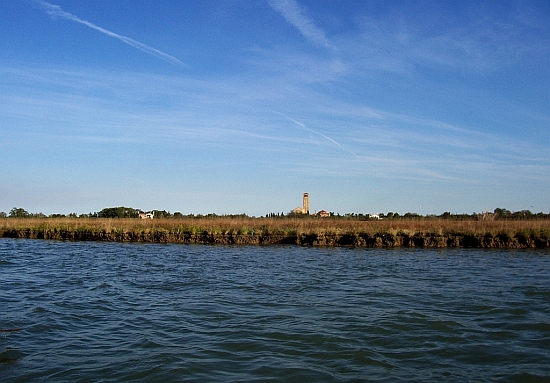
All this makes my brain hurt. Because I am convinced that whatever bits of stone or wood or pottery get carried away — a bit that really mattered where it was born — is going to get lost. Thrown away. Forgotten. Hidden under stuff in the attic that nobody ever looks at until they have to sell the house and by then nobody remembers what the thing is, or why it’s there. So what was the point?
Wait! Let’s say the person takes it home and puts it in a beautiful box or frame to display it. This means that either they are capable of spending the next 50 years looking at something they stole, which probably won’t remind them that they stole it, or they want other people to admire it. So they can say, “Yes — I contributed to the destruction of an irreplaceable landmark by stealing this. Nice, isn’t it? I’m glad you like it.” Then they send money to protect the dolphins or save the rainforest.
If you’re still reading, you may be edging toward the door. But I’m not crazy. Or if I am, I’ll never be as crazy as the tourists.
But let’s be fair. Even if the tourists were all made to tiptoe around the church in cloth slippers, it wouldn’t do much to stave off the inexorable damage caused by humidity, salt in the groundwater, storms, subsidence, and many other factors that are part of life on this planet and whose effects are all too visible at Torcello.
The point isn’t that people want to take bits home, it’s that the church isn’t being protected and cared for. It’s just sitting there, enduring what it must till another piece breaks off.
And by the way, the same thing is happening in the church of Santa Maria e Donato on Murano (first building, 7th century, flooring completed 1140), an edifice equally rich in mosaics. Don Carlo Gusso, the parish priest, is also ringing the alarm bells.
So far, though, it appears that nobody but you and me have heard them. Or at least have recognized that they’re not the dinner bell.
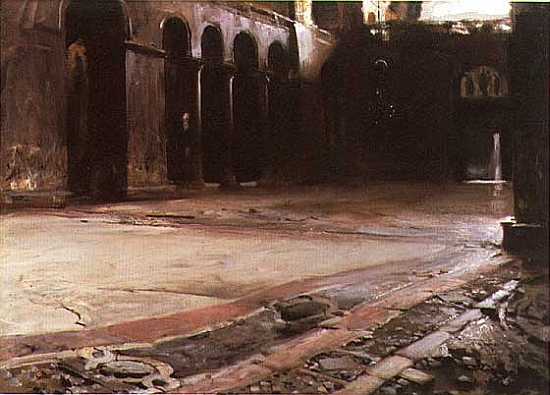
It all seems (in fact, it all is) very long ago now, but last May 23 was the 36th edition of the annual rowing marathon called the Vogalonga.
The 2009 edition was fairly appalling, and if I were to feel like writing a full account I’d need a strip of paper five Babylonian cubits long, or whatever the electronic equivalent might be.
This year everything was perfect, so I didn’t have anything to write about. You know how they say bad news is more interesting than good news? (I guess somebody says that.) Same thing here. How many different ways can you say “It was great”?
But great or ghastly as the “Long Row” may be, each year the organizing committee gives each rower a numbered stub when he or she registers, then a few months later puts on a raffle and holds a drawing for the prizes.
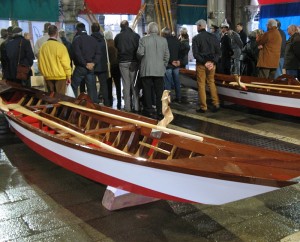
I dimly recall this event as occurring closer to the date of the Vogalonga itself, but for the past several years this convocation has been scheduled for late fall, when one’s memories of the equatorial heat and humidity, or whatever other weather dominated your spring morning in the lagoon, have been replaced by the sepulchral chill of an autumn twilight.
Thus we gathered last Friday night, in the waterside pavilion of the fish market at the Rialto, as usual, for the official thanking-of-many-brave-and-tireless collaborators, and for the drawing.
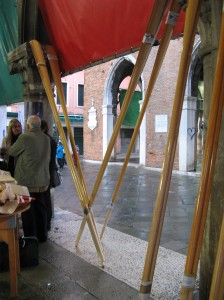
The prizes are pretty simple: Nine pairs of forcolas and nine pairs of oars, either pair suitable for rowing a Venetian mascareta. And two gleaming, brand-new mascaretas in the flesh.
One was financed by the Casino, a bittersweet reminder of the days not so long ago when the Casino had money to lavish on sponsorships all over the city, before their guy in the green eyeshade hit “total” and discovered they were 45 million euros ($52,356,493) in the red. And the other vessel was offered by the Assessorato al Turismo, or Tourism Department, similarly reduced, or so the reports have it, to eating shoe leather and tree bark to stay alive. I remember when there were three boats to be raffled off, but times are hard even in mascaretaland.
Here is how the event feels: I smile at an assortment of boating friends, (good); I feel the cold and damp seeping from the wet granite paving stones up through my shoes as the darkening air forms moisture everywhere around me (less good, but tolerable). And I metaphorically clamp an inverted facelock around the head of that inevitable craving that always lunges at me from when I see a boat that might, perhaps, in my dreams, be mine — that Christmas-morning suspense, but without any of the pleasure of knowing you’ll actually get to open the presents (not good at all.)
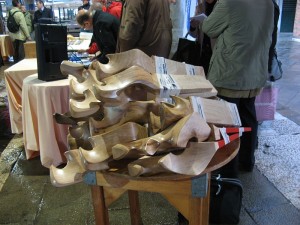
So we walked around the boats, like everybody else was doing. We stood and listened to the various pronouncements made by Lalo Rosa Salva, chief organizer and tutelary deity of the Vogalonga. We watched the winners walking away with their prizes. I stifled my urge to wail.
And then there was the buffet. No event can ever be said to have occurred in life here if food is not in some way attached to it. Attached at the end of said event, naturally, otherwise people would just skip it and head directly to the noshfest, however modest it might be.
Because the Rosa Salva family runs one of the city’s oldest and best-known pastry-making and catering operations, there were sandwiches and cookies and wine and sodas and water galore.
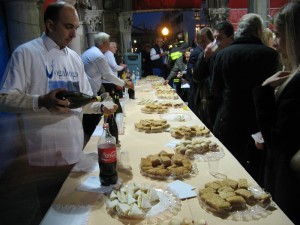
I remember when the buffet was somewhat more sumptuous — not that I’m complaining. But let the record show that I remember a generous assortment of sandwiches, and tiny finger-pizzas, and pastries as well as cookies, and also fruit. Those were buffets that had a certain allure, as attested by the variety of matrons who, in their instinctive, ruthless way, would appear from nowhere and always get to the table first, claiming their spot with more conviction than Columbus claiming North America, and not budging.
They’d stand there eating, elbows half-cocked to ward off any possible intruders, and I have even seen these dowagers stuff extra snacks into their conveniently large handbags. Or even shopping bags, brought for the occasion. Yes, I have seen that with these very eyes. The buffet has always, at least up to the other night, provided more drama than the drawing, because some ignorant or foolhardy person would occasionally try to displace one of these dreadnoughts. This year, though, the dowagers didn’t even show up. A sign more vivid than the shrinking prizes that times have indeed become hard. Pretty soon we’ll have to start stockpiling canned goods.
Oh, about the boats: I didn’t win one. But as I watched members of the two lucky clubs carry the mascaretas bodily to the Grand Canal, some perplexing thoughts seeped into my mind.
Such as: If Venetian rowers (by which I mean people, of whatever provenance, who row in the Venetian way) form the smallest possible percentage of participants, which they do (something like a quarter of the total) why are the prizes only suitable for Venetian rowing? Me, I think it’s just fine, and a brilliant way to stand firm for whatever can still be maintained of Venetian-ness. I merely note that for someone from Lithuania who rows a kayak, a forcola and an 11-foot [3.30 meters] wooden oar might not be exactly what they’d consider a prize. Of course they could sell it, but that would be crass.
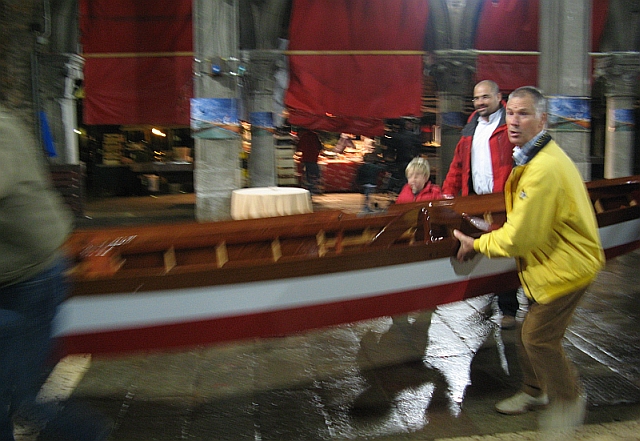
And this: Why would either of the entities who paid for the two boats feel any particular need or desire to do so? Of course it’s a very handsome gesture, but if the main purpose is self-publicity — and I may have misinterpreted the reasoning — there must be items with more advertising throw-weight than two little boats which will only ever be seen here where everybody already knows about the Casino and the Tourism Department.
And this: I know raffles are intended to be, or to appear to be, composed of free gifts (i.e., gifts paid for by somebody other than the participants). But considering that each person pays a registration fee, technically you could say that the winner of oars or forcolas had already paid for them. But there I go, being crass.
Anyway, I didn’t win anything, so I don’t care. Now I think I’ll go buy a lottery ticket. Maybe my odds will improve and then I’ll be able to buy an entire boatyard all for myself.
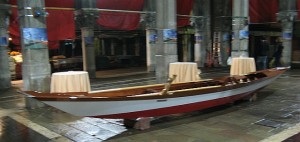
Blessedly, there is an antidote to the histrionics of the racing world, and it is composed of the assorted boating events strung across the calendar which are conducted by us plain folks.

One of the prettiest, for the rowers, at least, is called the “Riviera Fiorita,” or “flowered riviera,” which consists, among many other events, a boat procession (“corteo“) which meanders down the Brenta Canal from Stra to the lagoon over the course of one long and (one prays) sunny day — usually the second Sunday in September. Participation is optional, so the number of boats and rowers can vary, but some years have seen nearly a hundred boats.
Two weeks ago was the 33rd edition of this event, which means that by now many of the participants have long since forgotten two of its basic motives, if they ever knew them in the first place.
One, that it was conceived in order to draw attention to the calamitous condition of this attractive and very historic little waterway, which till then was known primarily (and still is) for the ranks of Renaissance villas standing along its banks. There are anywhere between 40 and 70 of these extraordinary dwellings, depending on what source you’re reading; plenty, in any case.
Back in 1977, in the attempt to rally the public to the aid of this stretch of former Venetian territory, a few local organizations engaged a number of the fancy “bissone” and their costumed rowers from Venice in the hope of drawing some spectators, raising awareness and concern for the river’s plight, and so on. As you see, the plan worked.
Second, that the event is intended to recall (“evoke” would be impossible for anyone today even to imagine, much less pay for) the corteo which was held in July of 1574 to welcome Henry III, imminent King of France, King of Poland and Grand Duke of Lithuania, on his approach to Venice.
Henry’s visit inspired all sorts of memorable incidents; every time you’re reading about the 16th century hereabouts, he keeps turning up. The magnificence of the entertainment provided by all and sundry over the week he spent in the Doge’s territory makes it a little hard to remember that the basic purpose of his visit was to ask the Doge to lend him 100,000 scudi, without interest. Next time you want your buddy to spot you a twenty, see what happens if you ask him to organize a boat procession in your honor. And a couple of masked balls,while you’re at it. But then, your buddy probably isn’t the only thing standing between you and the Spanish Empire.
Then this thought crosses my mind: If the Doge had had any notion that some two centuries later the republic would be ravaged, wrecked, and exterminated by a Frenchman, maybe he would have thought twice about lending him the money and giving all those parties. One of countless useless afterthoughts gathering dust in my brain.
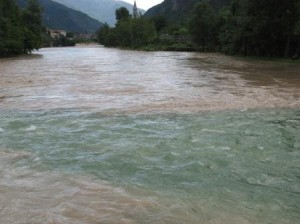
So why is there a Brenta Canal (“Naviglio del Brenta”) when there’s a perfectly good Brenta River? Because the river, which springs from the lake of Caldonazzo in the foothills of the Alps near Trento, and wends 108 miles (174 km) southeastward till it reaches the Venetian lagoon, is too unruly and too silt-laden to have been permitted to continue its traditional path to the sea which was, in fact, the Grand Canal.
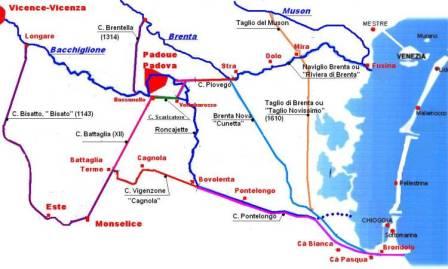

The Venetians had been fiddling with the river’s course since the 1330’s, and by the 17th century had diverted the main river south, to debouch into the Adriatic at Brondolo, leaving a more docile little arm of the river, plus several crucial locks, to use as a direct connection between Venice and Padua. It was perfect for the transporting of all sorts of cargo in barges towed by horses, some of which cargo included patrician Venetian families with lots of their furniture shifting to their summer houses/farms for as much as six months of partying.
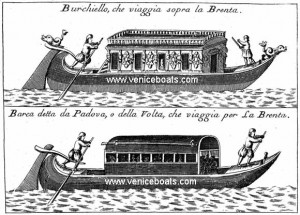
That’s the short version.
This waterway has now come to style itself the Riviera del Brenta, sucking up new streams of tourism by promoting its amazing collection of villas. These vary in size and splendor, from the monumental Villa Pisani at Stra (yearning to matchVersailles, or at least Blenheim) to many elegant and winsome mansions — my favorite, the Villa Badoer Fattoretto — down to a ragged assortment of deteriorating properties whose history deserves something better than what they’ve been doomed to suffer.
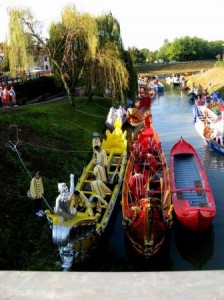
The boats, fancy or otherwise, were towed upstream from Venice on Saturday. Sunday morning we took the bus to Stra, where we joined the throngs getting themselves and their boats ready to depart. We were on a slim little mascareta, just the two of us. At about 10:00 (translation: oh, 10:30) the procession moved out.
The sun was shining, the air was cool, the spectators were happy, and I was feeling pretty good myself. We had 17 miles (27.3 km) to go, but by now I knew what the stages would be, so I was prepared not only for the effort of rowing (not much) and the effort of not rowing (strenuous).
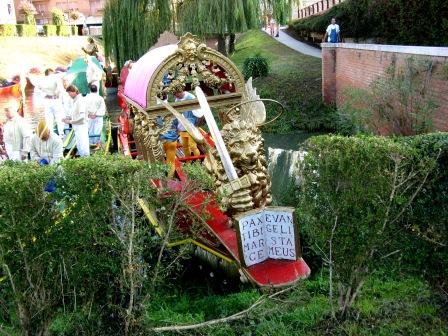
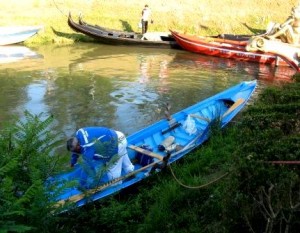
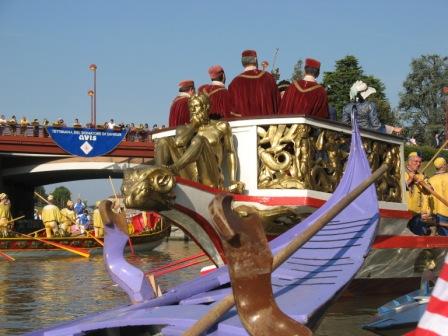
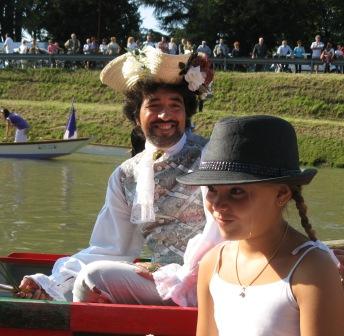
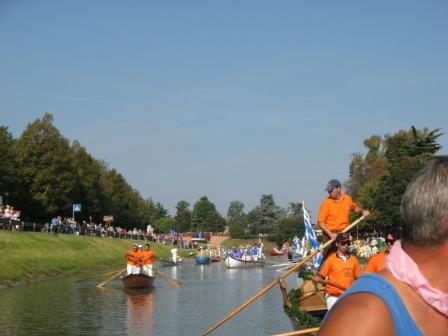
“Not rowing”? What do I mean? If we were to row at top speed, bearing in mind that we’re going with the current — slight as it may be — we could theoretically make the trip in three hours. But speed isn’t the point, and there is also the factor of those three pesky locks and three pesky revolving bridges we to have to pass through. As in: Wait to be opened for us to pass through. Wait for everyone else to catch up so we can all get moving as a group again. No stringing out the procession, it loses all its charm if we’re not together.
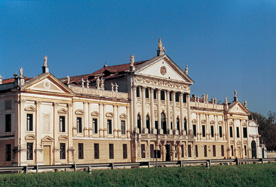
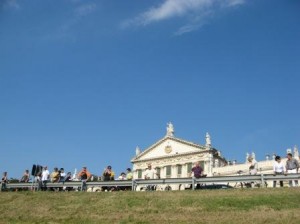
Here’s what I love about this event: The families clustered along the shore just outside their gardens, where picnic/barbecues are in full swing. I made a game of counting the number of houses we passed from which the perfumed smoke of ribs grilling over charcoal was billowing. When I got to five I gave up, because I knew I wasn’t going to be getting any and it just made me hungry.
Kids, dogs, people on bicycles, babies, fishermen, little old ladies — they’re watching us but I think they’re hundreds of times more fun.

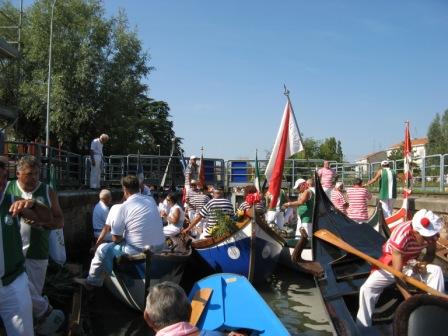

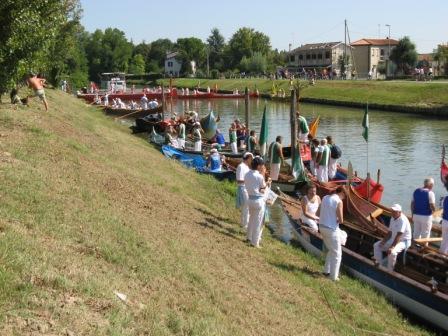

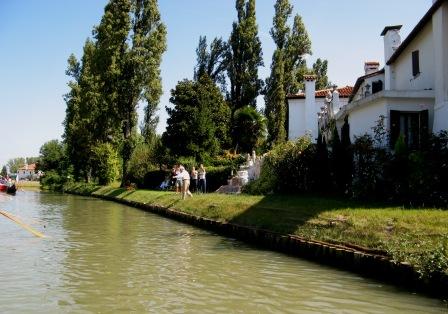
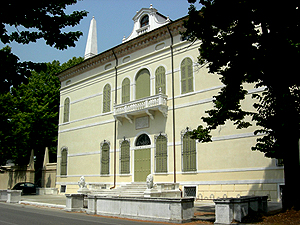

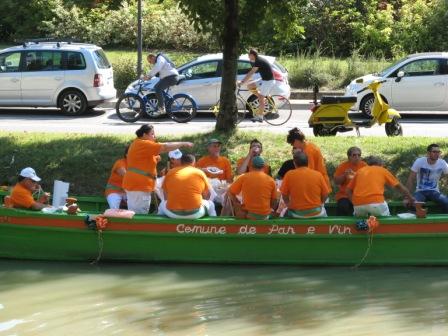
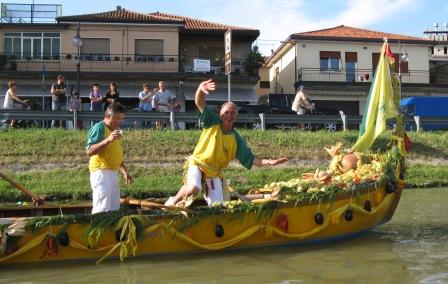
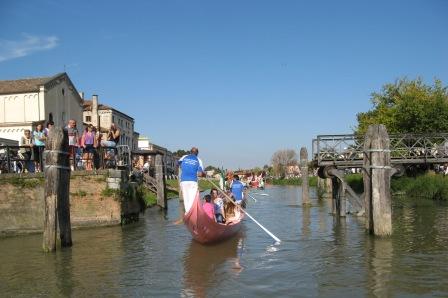
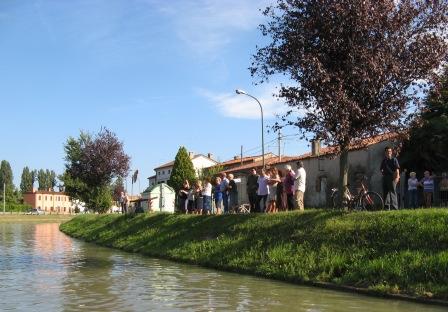
Here’s what else I love: Passing the Villa Foscari “La Malcontenta.” Not only is its elegance and repose something especially beautiful when we pass in the dwindling afternoon, when the sun begins to descend and the light warms to honey and amber. Reaching this emerald curve also means we’re almost at the end, an idea which is gaining appeal with every bend in the channel.
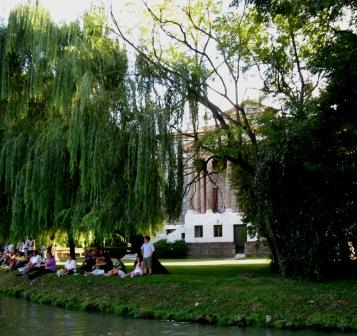
Here’s what I don’t love: The aforementioned locks and bridges, not in themselves but because of the sort of frenzy that overtakes people trying to squeeze their boat in when there obviously isn’t enough space for a toothpick. They start to get tired and cranky, and maybe they’ve had one or two glasses of wine (it could happen) and so these little solar flares of emotion begin to overheat my own sense of benevolence toward my fellow man.
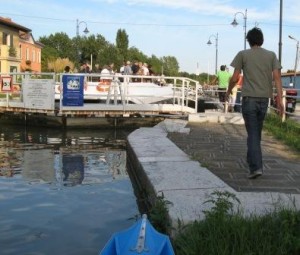
Here’s what I especially don’t love: Wind in the lagoon. It has happened more than once that by the time we were leaving the river at Fusina and heading into open water, we were facing a wall of wind. Which brings waves. Which means just when you really want it all to be over, you have to seriously get to work rowing.
In 2001 — a date branded into my brain — there was so much weather that the trip to the Lido in the 8-oar gondolone which normally would take an hour took three times that long. Doesn’t sound so bad? Maybe not now, but we had no idea when it was going to end, if ever, as we were struggling through the tumult, crashing along, the boat stopping every time we went into the trough between the waves, of which there were many. I also lost my oar overboard. Having to retrace lots of waves we’d just conquered in order to recover it is not a memory I revisit with any pleasure.
You might think that this kind of experience would really build your muscle mass, and I suppose it does. I counted several whimpering new ones the morning after. But what it really toughens up is your mental mass. Mental stamina, some level of fortitude you never needed till now. Plain old grit. You’re out there and suddenly realize you’ve completely run out of the stuff and you’re still not home? You’ve got to make more grit right there. There is no alternative.
One of those nights we were rowing back (it’s always getting dark in these return voyages, which adds to the dramatic element) in the six-oar caorlina with four teenagers who hadn’t done much rowing. I was in the bow, so I couldn’t see anything but night ahead of me. Rowing, rowing… It felt like we were rowing in a sea of cement, pushing against a brick wall. And as I rowed, I gave myself comfort in the only way I could: Swearing a series of oaths in my mind, more sincerely than any juror with both hands on the Bible, oaths which I fully intended to voice to Lino whenever we made it to shore, and calling on the angels, prophets and martyrs as my witnesses, as follows:
“Forget my name. This is the last time. I’m never doing this again. This is insane. I hate this. Why am I here? What was I thinking? Forget my name. This is the last time…..”
I can’t remember how long ago that was, and well, I’m still doing it. So much for my oaths, and I think my witnesses have all gone home.
But this year the return row was heavenly. We were towed, with ten other boats, from the last lock at Moranzani out into the lagoon. When we got as far as the Giudecca, at about 7:45 PM, we untied our little mascareta from the others and rowed through the darkness back to the Remiera Casteo, at Sant’ Elena. The other end of Venice, in other words.
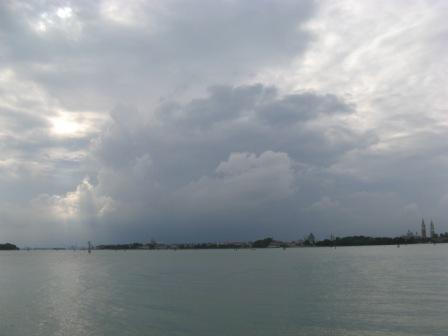
I love rowing at night. The sky gleams like black onyx and the darkness somehow makes it feel like you’re going really fast. There is almost no traffic (it’s not summer anymore, thank God) so the water is smooth and silky. It’s dreamy.
Then we had to cross the San Marco canal– sorry, dream over. There’s less traffic at 8:30 at night, but there are still waves, spawned by an assortment of vaporettos and the ferryboat and some random taxis, none of whom is likely to be looking out for any stray mascareta. Yes, we had a light. No, it wasn’t a floodlight. This created enough tension to inspire me to speed up. and we briskly made it across in only a few minutes.
Home free. And very sorry it was all over. And very ready to shut the door on today and turn on the shower. Boats are great but 12 hours in one is plenty.
The past few days in the world of the oar have been pretty agitated here.
The Commission of Discipline (no remarks please) has listened to the rowers and the judges involved in the dramatic events of the Regata Storica and has rendered its decision. An assortment of decisions, really, which amounted to throwing a couple of spare barrels of oil on the waves of accumulated anger.
Angry rowers are nothing new, and a fan that isn’t enraged and offended by something isn’t worthy of the name. But this time the judges — angry too, which also is no novelty — made the unusual step of revealing their antagonism to the public. This is an alarming sign of how far order in the world of Venetian racing has deteriorated.
And I sense that it’s not over yet, not least because when you throw oil on turbulent waters, you often get covered in oily spray. But usually the situation at that point is so perilous that the benefits outweigh the oil.
To review: Ivo Redolfi-Tezzat and Giampaolo D’Este (celeste gondolino) were disqualified in the throes of the Regata Storica on September 5, the most important and hugely most remunerative race of the year, because they did something(s) to prevent their lifelong rivals, Rudi and Igor Vignotto (canarin gondolino), from accomplishing some maneuver that might have been to their advantage. In fencing terms, this could be called the celeste parrying the thrust (or probable and/or imminent thrust) of canarin. Celeste was disqualified, canarin won.
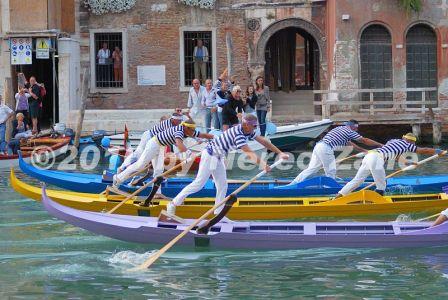
The Verdict: The appeal of Tezzat/D’Este was rejected. The new regulations stipulate that the judge’s verdict is unassailable, which in some ways ought to make the judges more punctilious. But that would be true only in an ideal world, and the Grand Canal is beautiful, but not ideal.
First point: Under the new rules, the order of finish is carved in titanium, hence celeste had no hope of being judged the winners in the cool light of the morning after. But that didn’t stop Tezzat/D’Este from registering a formal protest, hoping for a severe punishment to be inflicted on canarin. Hoping is fine, seeing as hope costs nothing. But their status as disqualifees remains unchanged.
Second point: The Vignottini did not escape completely unscathed, however. They received an official admonition (“diffida,” or warning) for “unsportsmanlike conduct” during the race. This is a black mark on their record, but does not comport any material damage.
Observation: I am not the only person who has noticed a certain incongruity between a decision which says that (A) celeste sinned and deserved its punishment but that (B) canarin also sinned but only needs a rap on the knuckles.

Third point: The judges. The two judges in the first boat, Gianni Tonini and Sandro Fort, were reprimanded for a series of errors which did not help, and perhaps aggravated, the situation during the race. In the simplest terms, their function (true for most judges) is to anticipate and prevent problems by timely warnings during the race. A judge, as one of them commented to me, doesn’t show how brilliant he is by the number of punishments he inflicts, but by the number of imminent problems he manages to resolve before punishment becomes inevitable. That didn’t happen here.
Tonini got an official “richiamo” from the Commission, and Fort got a richiamo because he let the race start even when the starting gun misfired. (As in: didn’t fire at all. The rules say the judge has to fire again and return all the racers to the starting line.) There were also a few commands issued to the rowers during the race by both men which are hard to justify even if you don’t care who won. But the important point is that this is the first time a judge has been publicly reprimanded.
Extra surprise: Startling but true, Ernesto Ortis, the coordinating judge, formally and publicly disassociated himself from the actions of Tonini and Fort. I believe this is a first here; like many groups, the judges have always prefered to present a united front even while they bicker inanely among themselves. It is no secret that bile has been bubbling for quite a while against the perceived hubris of Fort.
Outcome: The reaction to all these decisions (all of them wrong, of course, in the eyes of everybody except the commission) was to be seen at the regata at Burano last Sunday.
REVENGE AT BURANO
You may recall that the infuriated Tezzat first claimed they weren’t even going to try out for this, the last regata of the official season. But they did. Rowers make all kinds of affirmations that they never act on, usually some variation on “Take a good look at my oar, because it’s the last time you’re ever going to see it.” Next day, there they are.
So Tezzat and D’Este did the eliminations (What? Aren’t you supposed to be in Queen Maud Land?) and qualified for the race.
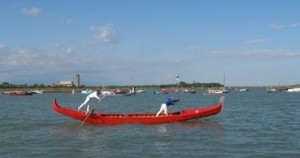
They showed up at Burano on Sunday on the green gondola. It was time for the race. All the gondolas were at the starting line, each poppiere (person rowing astern) clinging to the rope and struggling to keep his boat straight in the face of an annoying headwind and contrary tide.
But where’s green?
At the last minute, Tezzat and D’Este rowed, not to the starting line, but to the judge’s stand (all you racers just wait there till we’re done….). There they handed a piece of paper to the race announcer, who read it over the loudspeaker to the officials grouped on the dock, and to the suspenseful, murmuring hordes crushed along the water’s edge.
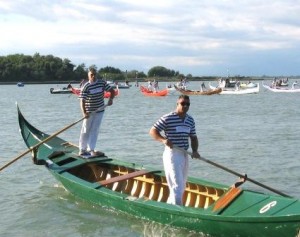
This document announced to the world, in the loftiest terms and the purest tones of innocent, persecuted victims, that Tezzat and D’Este would not only skip the race that was waiting to start, but won’t be racing again until All This gets cleared up once and for all. It was a sort of “J’accuse” aimed at the judges, collectively and individually (corrupt, incompetent, superannuated, cretinous) and at the Comune, represented by its execrable functionaries.
Their declaration did not use the exact terms employed by Emile Zola in his immortal denunciation (“…a great blow to all truth, all justice…”…”It is a crime to poison the small and the humble…”…all the revulsion of an honest man…”…”And these people sleep at night, and they have women and children whom they love!”). But I think they would have used those terms if they’d thought of it.
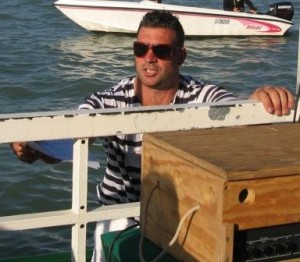
They then consigned a pair of symbolic oars to the new Counciler for Tourism, Roberto Panciera, and rowed back to the boathouse. I was on the dock and didn’t see anything oar-like changing hands, but maybe they were coffee spoons modified to look like oars.
This pantomime was not followed by stunned silence, it was followed by every shape and size of bellowed protest of passionate partisanship. There was one woman who yelled rolling phrases of excoriation in a voice of doom that could carry to the mainland and possibly farther. She was amazing. Just think, she could have summarized everything in the simple phrase “String ’em up,” but she clearly had quite a lot on her mind which had been pent up too long. If you’ve ever wondered what the vox populi might sound like, she was it.
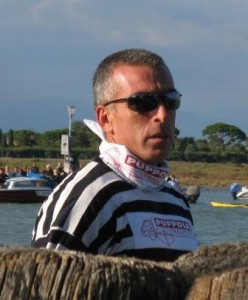
Then the race proceeded and the Vignottini won. No surprise there, naturally. God, how it rankled the public! I’ve never heard so many people so rankled. This was one situation where the daily habit of everybody talking at once turned out to be useful, because except for the Voice of Doom, you couldn’t understand anything anybody was saying. I thought about cheering for the Vignottini just to see what would happen, but the fans were like a mob of maenads, and I didn’t feel like being dismembered and devoured raw. Maybe some other time.
What next? I have no idea. There is already a sub-theme being promoted which demands the immediate dismissal of all the judges (why not — let’s just kill them all) and the installation of an entirely new cadre of judges, a new Commission of Discipline, a new everybody.
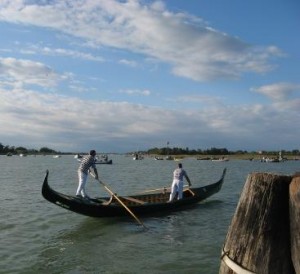
Only problem is, every time the Comune invites people to apply to become judges, nobody responds. Nobody wants to spend summer Sundays in all kinds of weather dealing with the racers, their relatives, and their fans who are howling that the judge’s dead relatives are dogs. Judges are likely to lose all their friends, too, who would suddenly regard them as unspeakable traitors. I know judges whose friends look the other way when they walk past on the street. I know: So they’re not real friends. But still. All this for 40 euros ($52) a race, and now there’s the chance to be publicly chastised as well? How could anybody turn that down?
The only option left to Tezzat for reclaiming his symbolic oar is to appeal to the mayor. The Vignottini resorted to this a few years ago, back before Igor threw his pennant into the canal in front of the mayor and their relationship turned to stone. But now there’s a different mayor, and let us not forget: Tezzat and D’Este are innocent.
I’ll see you on the barricades.
